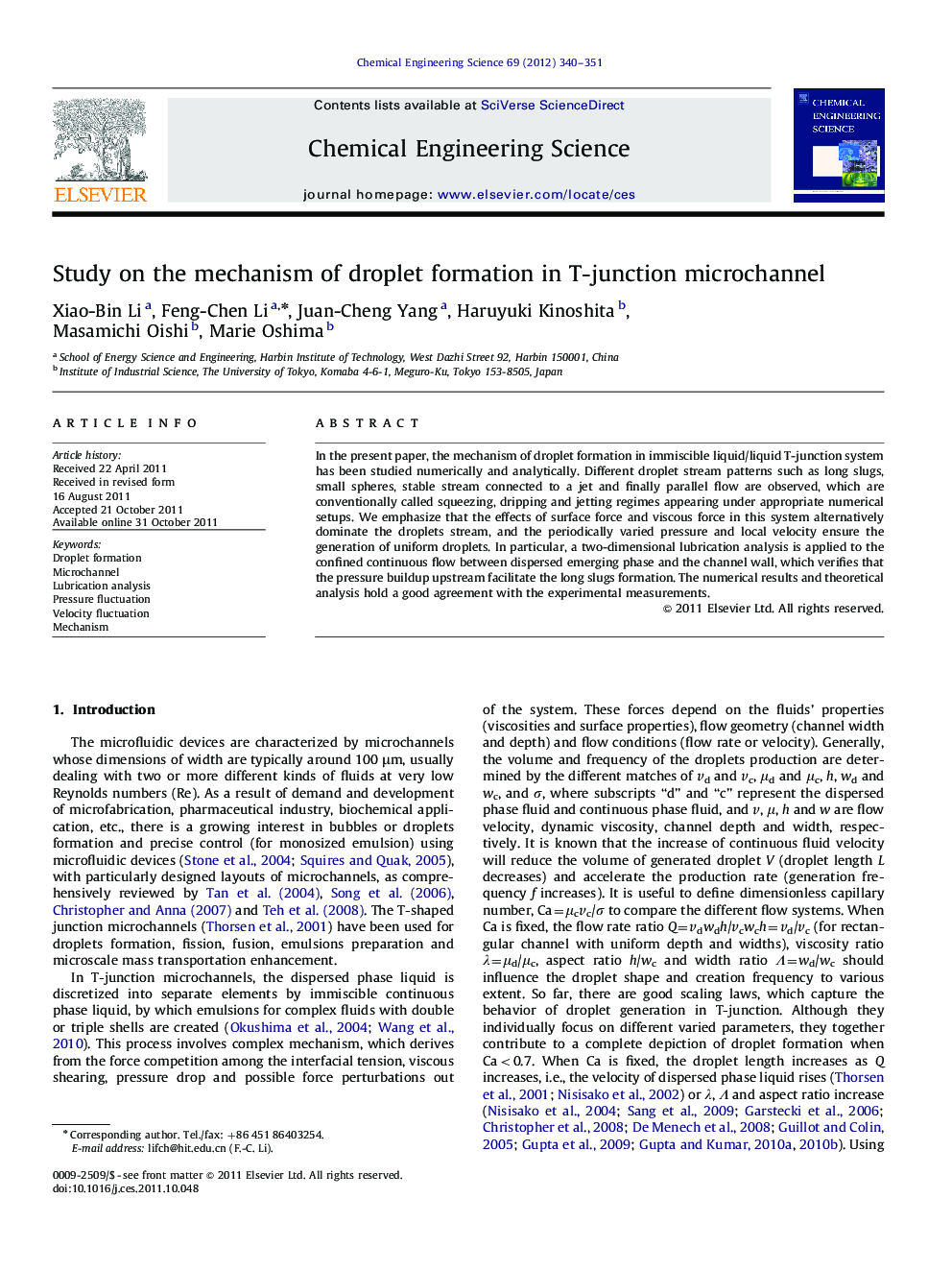| Article ID | Journal | Published Year | Pages | File Type |
|---|---|---|---|---|
| 155907 | Chemical Engineering Science | 2012 | 12 Pages |
In the present paper, the mechanism of droplet formation in immiscible liquid/liquid T-junction system has been studied numerically and analytically. Different droplet stream patterns such as long slugs, small spheres, stable stream connected to a jet and finally parallel flow are observed, which are conventionally called squeezing, dripping and jetting regimes appearing under appropriate numerical setups. We emphasize that the effects of surface force and viscous force in this system alternatively dominate the droplets stream, and the periodically varied pressure and local velocity ensure the generation of uniform droplets. In particular, a two-dimensional lubrication analysis is applied to the confined continuous flow between dispersed emerging phase and the channel wall, which verifies that the pressure buildup upstream facilitate the long slugs formation. The numerical results and theoretical analysis hold a good agreement with the experimental measurements.
► We investigate the mechanism of droplet formation in T-junction microchannel. ► The forces competition during the droplet formation is studied. ► Pressure in the emerging droplet is testified to be in dynamic variation. ► Pressure difference in the gap flow is estimated by a 2D lubrication analysis. ► Velocity and pressure in droplet fluctuate less at lower continuous-phase velocity.
